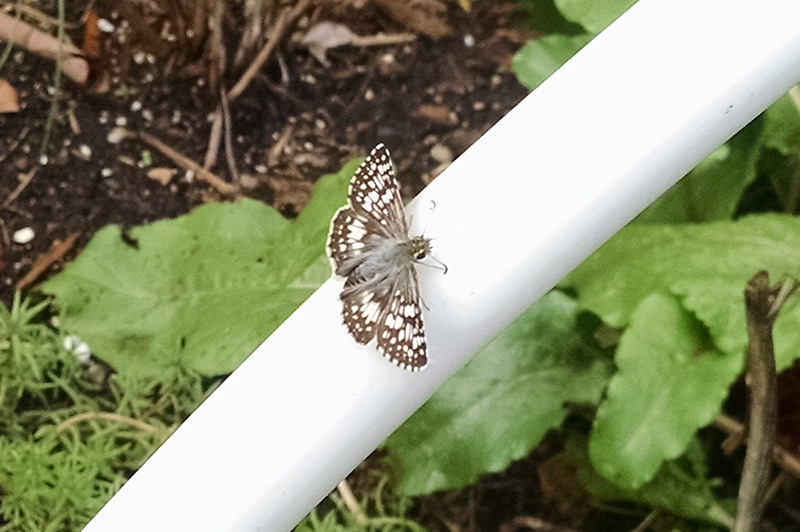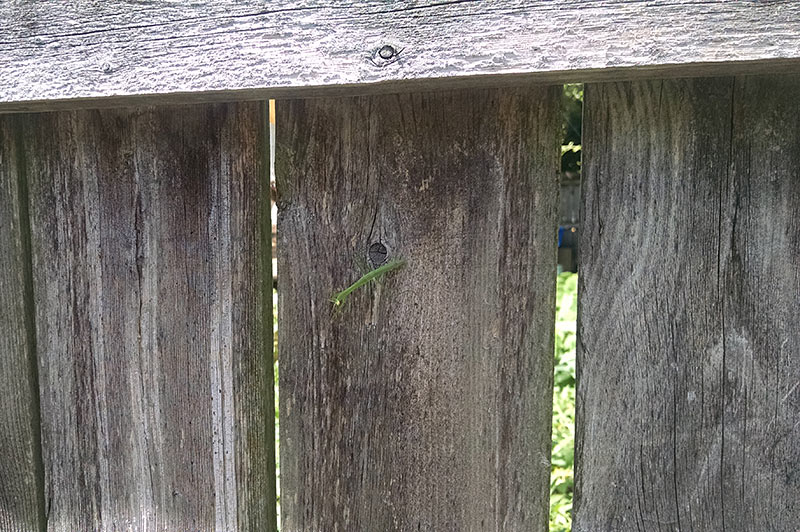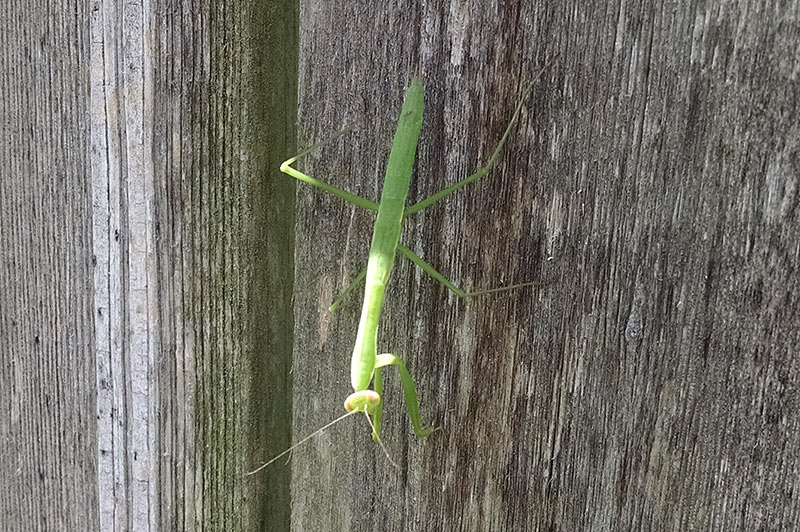It has been awhile since I participated in Bloom Day over at May Dreams Gardens. But the weather was slightly overcast the other morning, so I brought the camera out into the garden with that goal in mind. This Spring on the Lot seems to be running behind previous years. When I attended a bare roots class the other weekend, our instructor commented we are about 2 weeks behind last year. Looking back at the blog at previous Spring blooms for May, that does indeed seem to be the case.
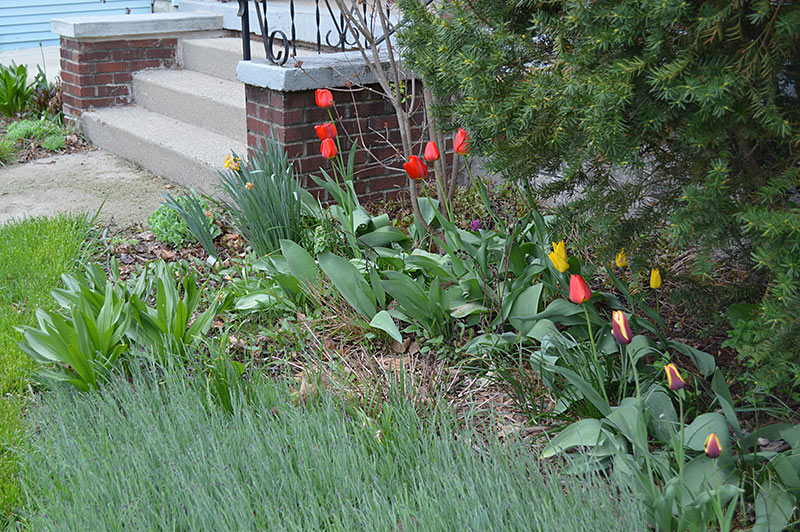
Out front in the south bed of the Lot, those classic red tulips are blooming. These bulbs were in the bed when we moved into the home. There are many not blooming beside and behind the overgrown yew which also was there on move-in day. I’m determined this year to mark area with popsicle sticks and dig them up in the fall and relocate them. The bi-color tulips are newer.
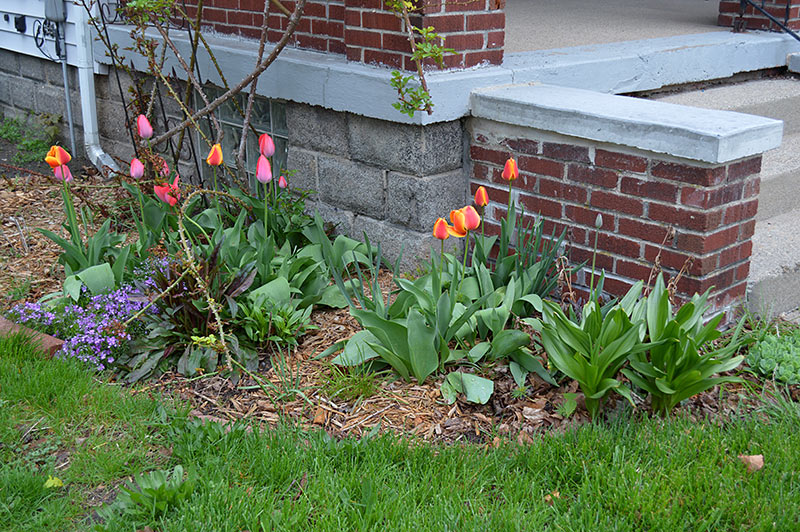
In this southwest bed are new tulips as well. The creeping phlox (Phlox subulata) is also blooming. I’d like to divide it after it is done blooming and distribute it more evenly through the south and southwest bed.
Pro Tip: To get a discount on creeping phlox for your garden, visit the nursery after the phlox’s bloom time. The nursery will have sheered off the spent blooms, so it is harder for them to sell to the public. If you know what you’re looking for, you often get a bargain!
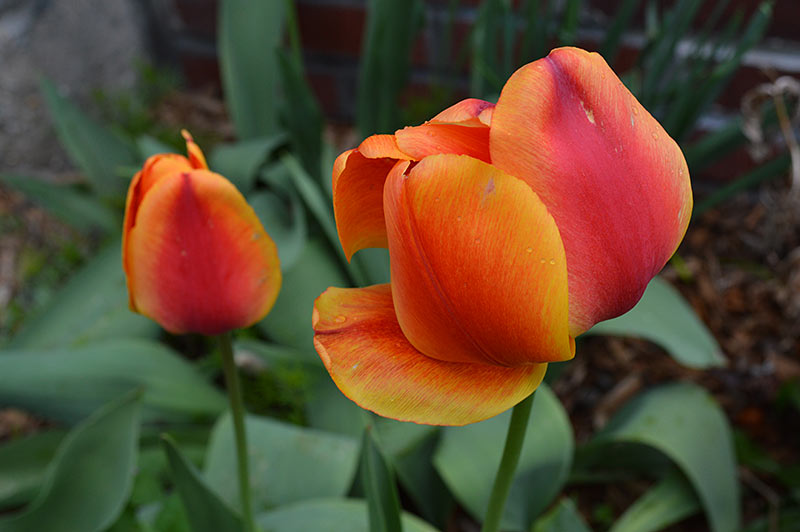
And then I got momentarily distracted by these less-than-perfect looking tulip blooms. I do enjoy a good quirky, bug nibbled flower.
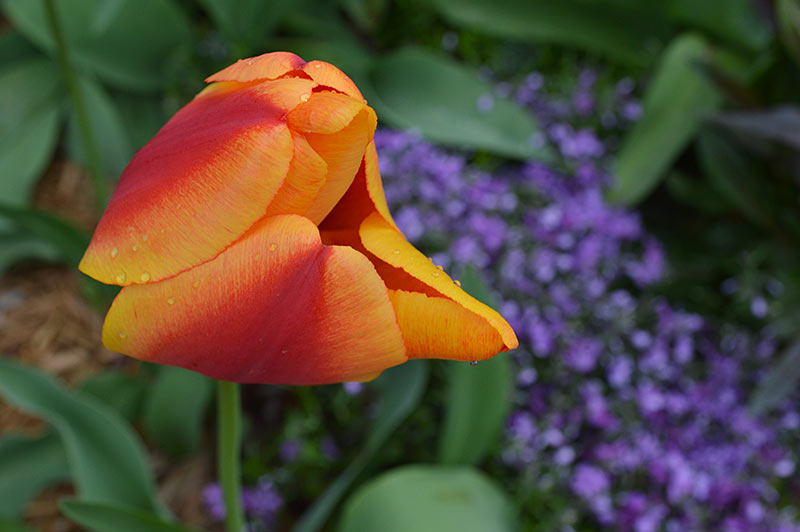
It also had rained the night before, so there were droplets of rainwater still on the plants. Okay, onward!
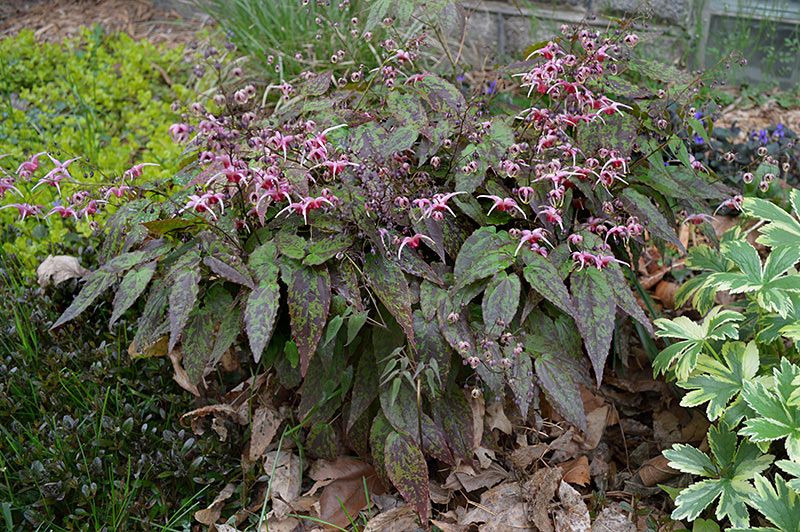
Here the barrenwort (Epimedium) is in bloom in the east bed. I LOVE, love, love this plant. It is so magical…like foam flower (Tiarella) magical. Those little flowers look like they are floating, and check out the foliage! This is a rockstar for dry shade or morning sun areas in the garden.
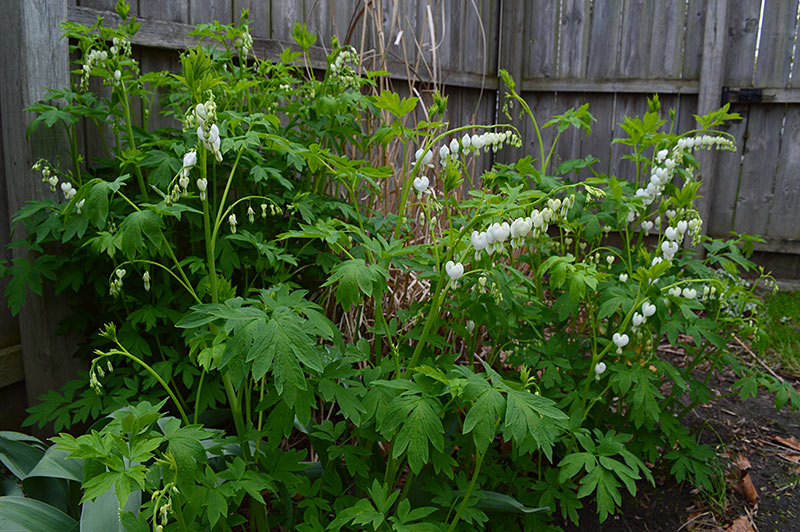
In the back garden of the Lot, the bleeding heart (Lamprocapnos spectabilis) is displaying its stalks of suspended blooms. I have a lot of seedlings from this plant to give away in a neighborhood plant exchange this year!
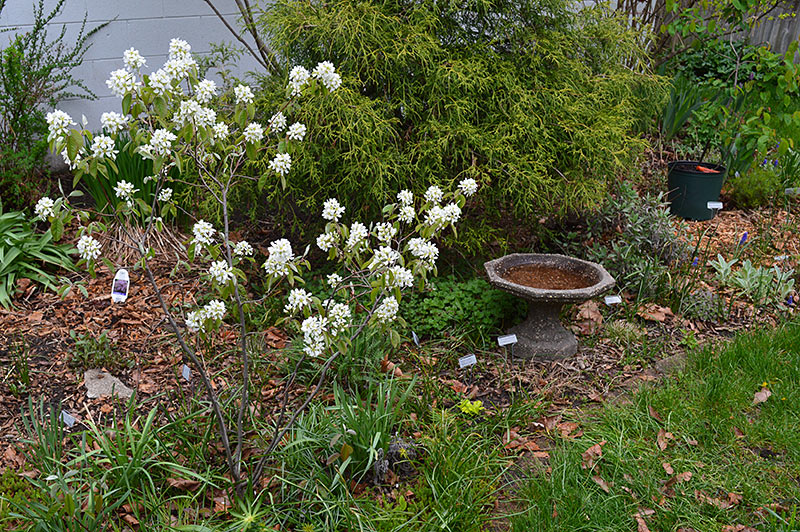
Here is a service berry shrub in bloom. This shrub is a favorite of any robins nesting nearby. They absolutely love the fruit.
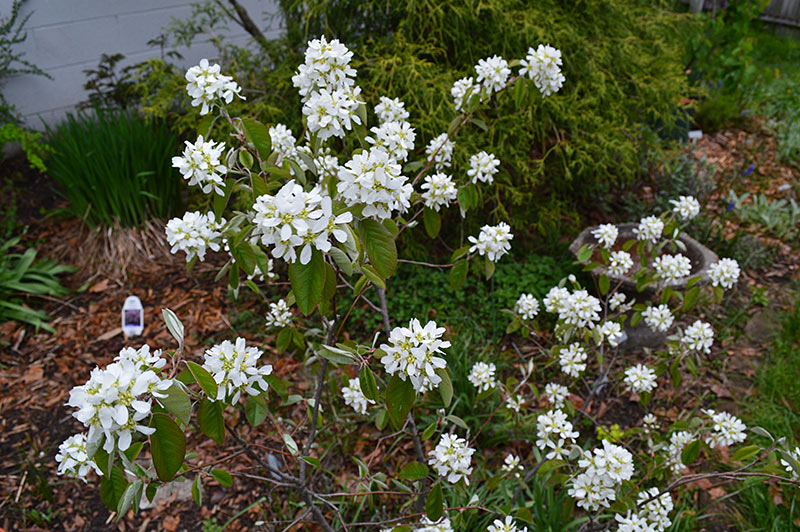
A closeup of the shrub. I really enjoy white blooms in the spring. Whenever we have rainy days and overcast skies, the white blooms of this shrub seem to glow. It’s a nice reminder when looking out the kitchen window that spring is indeed in progress.
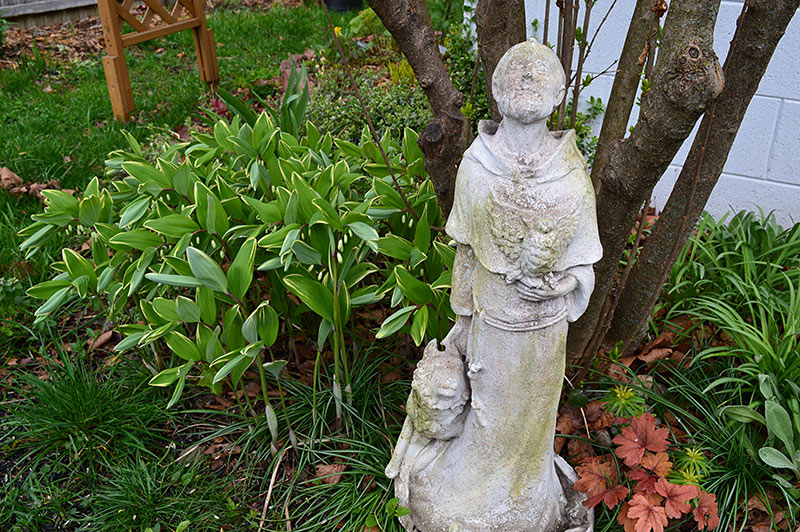
This Solomon’s Seal (Polygonatum odoratum ‘Variegatum’) colony, pictured to the left of St. Francis, began with transplants from Loki’s bed thanks to my gardening buddy Ms. A. I feel it’s filled in rather nice.
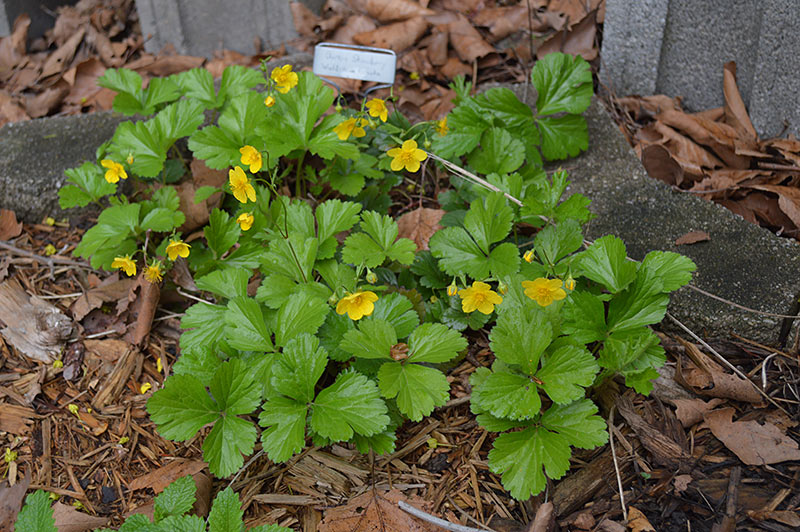
In the very back of the backyard garden, this barren strawberry (Waldsteinia fragarioides) is nestled between the rain barrels. Again, the lighter color bloom brightens up this area on cloudy days. It’s often grown as a groundcover, though it has been slow to spread in this spot. I think I’m going to grab a few more of these during this year’s nursery crawl.
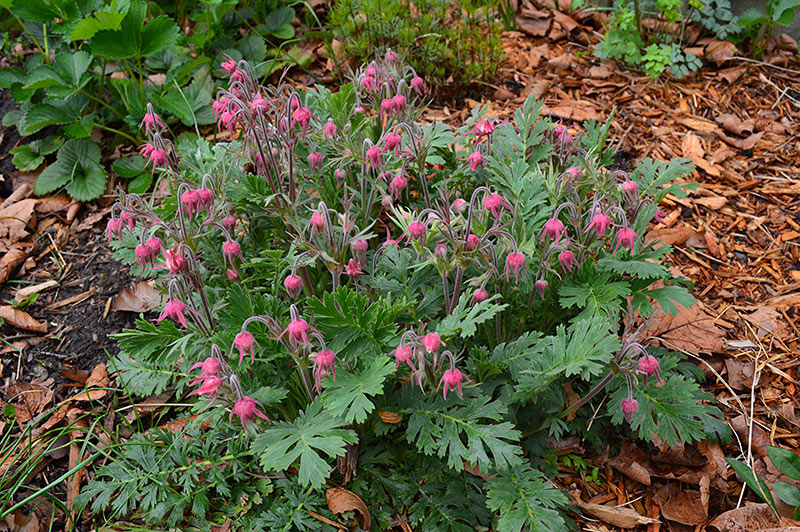
Gah, I love this plant SO much!!! It’s prairie smoke geum (Geum triflorum). There are geum cultivars available, but I’ve never found any of them as interesting as this native gem. I feel this could be one of those magical plants as well. That’s a scientific classification, right?
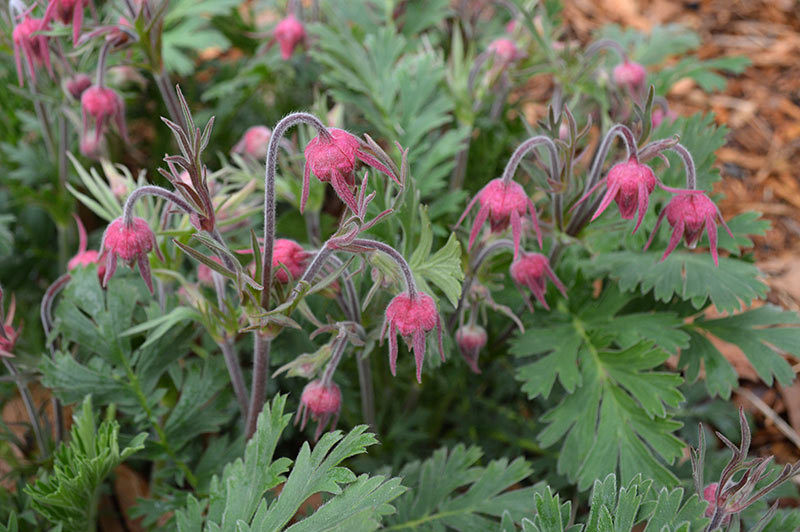
A closeup shot of the flowers. So fuzzy!!!
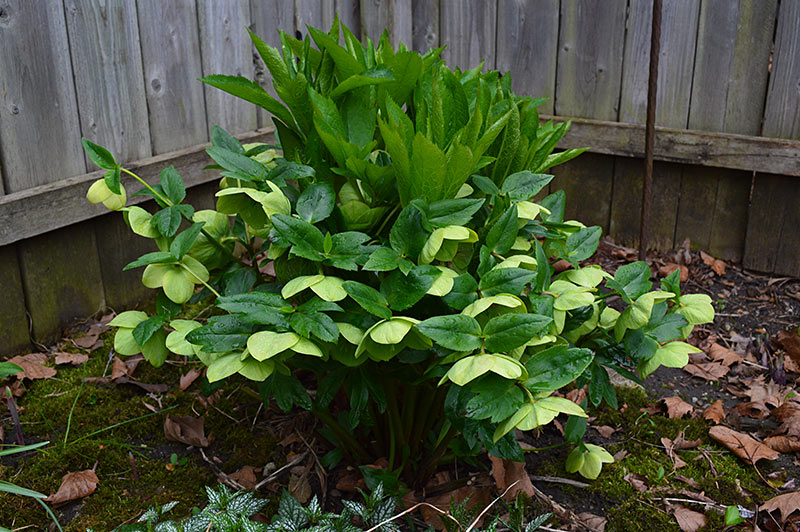
And finally in Loki’s bed, the very first lenten rose (Helleborus) to grace the Lot is in full bloom with new grow on the way. It gets larger and more beautiful every season.
But Wait, There’s More
There are more plants blooming on the Lot I haven’t pictured above. A whole bunch of grape hyacinth bulbs (Muscari) and violets are adding purple dots of color. Cranesbill (Geranium) and more lenten rose (Helleborus) are also in bloom. A few primrose (Primula vulgaris) are still blooming. The brunnera (Brunnera macrophylla ‘Jack Frost’), lungwort (Pulmonaria), and rock cress ((Arabis sturii) are all beginning to bloom.
